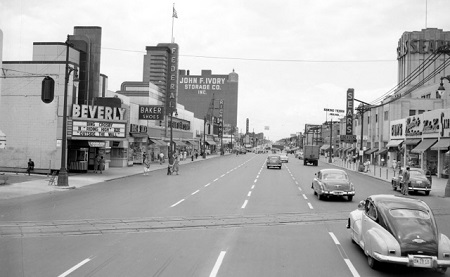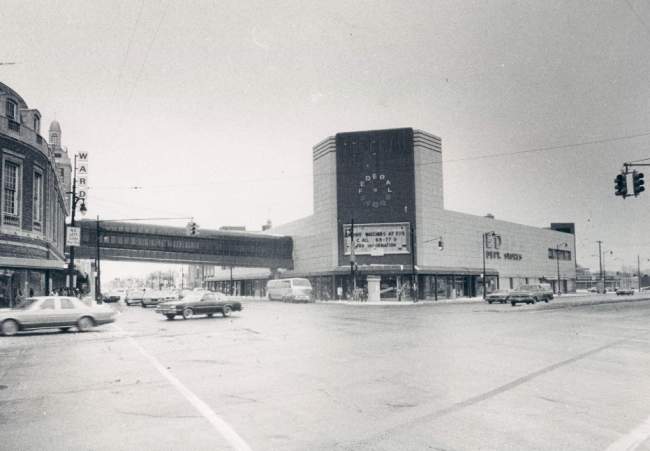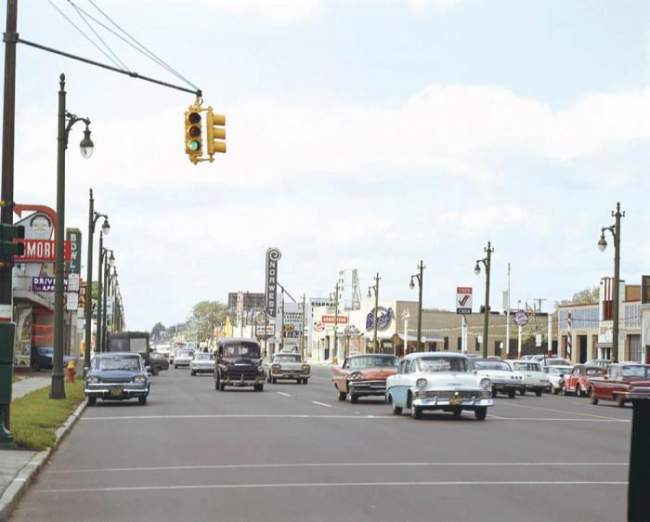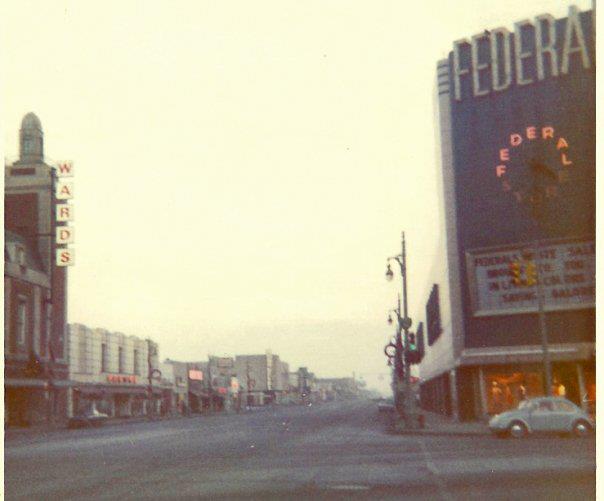Quote:
Originally Posted by edale

I appreciate your post, and will admit to a bit of hyperbole with my commercial corridor comment. I know of the (mostly) Mexican corridor along Vernor, but that slipped my mind. I applaud Detroit for its revitalization efforts, and would love to see continued progress in the areas you highlighted and beyond.
Still, for such a large city, there's a a pretty small amount of surviving urban commercial nodes. And, tbh, some of the examples you shared don't exactly appear to be very occupied or urban. If these are all that's left out of a city that can fit SF, Boston, and Manhattan in it...well, that kinda proves my point.
But again, I appreciate the information you shared, and I hope to see more in the way of a Detroit resurgence for many years ahead  |
No worries, I’ve been known to occasionally throw around some hyperbole myself. Plus you were making a legitimate argument. Detroit retail has definitely been hit the hardest during the years of decline. The really grand commercial districts were in the “middle city” built between 1904 & 1933. 12th Street, Grand River & Livernois, Oakman along Harper & Kercheval are all only have remnants left.
My grandfather’s family when they left the dumpster fire that was being Jewish in the dying days of Tsarism in Ukraine (one of the Alexander’s invited westerners to modernize the economy my family took the offer. Too bad for history he was killed opening the parliament by radicals who wanted to stoke a reactionary response bringing revolution)
opened up a shoe store at Grand River and Livernois.
Grand River and Oakman
 https://twitter.com/DetroitStreetVu/...43573054140416
https://twitter.com/DetroitStreetVu/...43573054140416
Grand River and W. Warren
 https://www.motorcities.org/story-of...d-river-avenue
https://www.motorcities.org/story-of...d-river-avenue
The it’s mostly in the “new city” mostly built from the 30’s to the 60’s is where you’ll find the city’s retail districts, outside central of the urban core. When I was pointing out those stretches of retail I made a conscious effort to pick neighborhoods that kept to the original character as much as possible. Ie having more street side retail though it’s impossible to not have parking lots, drive thru’s and auto-repair shops in Detroit.
The far westside, that rectangle sticking out to the west is the quadrant of the that for the most part has high occupancy rates and low levels of blight. It’s also an urban-suburban hybrid. Most of the commercial thoroughfares are occupied and mostly intact in terms of low levels of vacant lots. However while back in the street car days they were designed for walkability with low to occasional mid-rise street front retail that changed.
Changes in demographics & wealth saw a trend where older buildings were converted into businesses catering to lower incomes. The city wanted to refresh its retail meeting modern suburban standards not an unfamiliar story at all as we all know and not a good one. Generally the wealthy and upper-middle class areas kept more of the traditional street front retail where as more average middle class neighborhoods saw more conversions to suburban style. Not that you won’t see plenty of original retail in avarage neighborhoods but it’s more likely to have been modernized in some way either minimally or totally re-cladded in cinderblocks.
Most of the major westside thoroughfares have a healthy amount of retail and the areas I pointed out are some of the larger stretches of preserved retail. Beyond where I mentioned the whole stretch of McNichols from Grand River to Livernois is a lively stretch of retail with few vacant buildings or gaps, a lot of it is boring inexpensive and car centric retail. 7 mile from Grand River to the Lodge is another major retail center with the 7 and Evergreen shopping mall, apartment tower & townhomes being built in the 70’s to revitalize the surrounding traditional retail.
Grand River and Greenfield is one of the last great pre-war shopping areas & malls it now bookends a smaller retail node at Lasher the former downtown of Redford Twp now called Old Redford. Both are struggling but have points in their favors. Old Redford recently had its corner store renovated into mixed use and it has a beautiful theater that plays cult classics for the artist community that’s been there for a while. There’s also a number of small businesses including a great sweet potato place a coffee house & a bakery along with a mom n pop pharmacy. Grand River - Greenfield has a Forman Mills occupying one of the two main buildings though the street front retail has taken a hit during Covid losing its Nike store & others with it. The Mammoth Department store across Grand River is at put up a plan now or the city will demolish, I hope it can be saved but the owners have failed so far.
 https://www.motorcities.org/story-of...d-river-avenue
https://www.motorcities.org/story-of...d-river-avenue
Grand River and Greenfield
 https://www.detroityes.com/mb/showth...reenfield-area
https://www.detroityes.com/mb/showth...reenfield-area
Grand River and Longacre
 https://www.detroityes.com/mb/showth...reenfield-area
https://www.detroityes.com/mb/showth...reenfield-area
 https://www.detroityes.com/mb/showth...reenfield-area
https://www.detroityes.com/mb/showth...reenfield-area
A cool old school Detroit retail location in terms of getting a mental picture of what things used to be like is Jefferson Ave. Jefferson -Chalmers is an old section of retail next to Grosse Pointe that’s being renovated and has already had several projects completed while much is underway now. Jefferson Ave in general has a lot of retail but it’s not as dense as it used to be. Check out E Jefferson at McDougall there’s a great stretch there.
Rounding things Joy and Plymouth both have long stretches on the westside of relatively dense retail although the block east of Southfield is kind of run down. But Greenfield also has a lot of retail though unlike many of the other mile roads on the west side im not seeing much new investment into building renovation or new stores, perhaps it’s due to the big strip mall / grocery store at the corner of Joy. East of Greenfield and south of 96 there’s a big industrial corridor. While Joy picks back up in a very nice neighborhood (Aviation Subdivision) the commercial buildings are scarcer and generally mothballed though a new close to street retail development looks to be opening. I’m not very familiar with this area.
Grand River and Joy 1970’s
 https://twitter.com/DetroitStreetVu/...66555518976000
https://twitter.com/DetroitStreetVu/...66555518976000
Schoolcraft and Fenkell are mainly residential with the exception of Fenkell in Brightmoor which was a neighborhood built quick and cheaper than most in the city while in a beautiful location, hilly with large parks and oak forest & by rivers. It became very blighted and most of the blight was cleared along with the majority of the homes. It’s a dozen home per block kind of neighborhood now but there are some loyal holdouts and new comers who like the space and natural beauty “downtown Brightmoor is mostly mothballed properly but it has some good Fish and Chips. The neighborhood is a focus of 2024 to get revitalization going as it borders Rosedale Park & Old Redford.
8 mile is seeing some big news in Detroit retail construction is progressing on the redevelopment of former Northland Mall. The Historic Hudsons department store has been saved and is being renovated into lofts and apartments while surrounded by a larger series of multi unit apartment developments.



